Internet of Things
SEPTEMBER 2023










SEPTEMBER 2023









Joe has vast experience and knowledge accumulated and honed as a New Business Development Manager and Relationship Manager. Responsible for generating new business opportunities, looking after the growth of the company and strategy, sourcing new ventures and managing the company.

Paul stops at nothing to innovate and create value for our customers. His mission is help those we work with to win in their markets. Passionate about delivering customer success and have had the pleasure of supporting many of the world’s leading technology brands for over 15 years.

Matt is Operations Manager at TBTech, he has spent the last 15 years working with multinational IT companies building campaigns, GTM strategies, leading both Sales and Marketing teams to achieve organisational goals. With a love of computer science, history, and psychology he is an advocate for change, operational efficiency and automation. Value across the business for all our customers.

We have been working behind-the-scenes to elevate the readers experience.
Erin’s love for advertising and design has led her to Tbtech as the Media Marketing Apprentice. She loves exploring new skills and learning more about the tech sector and making sure the magazine is up to standards.


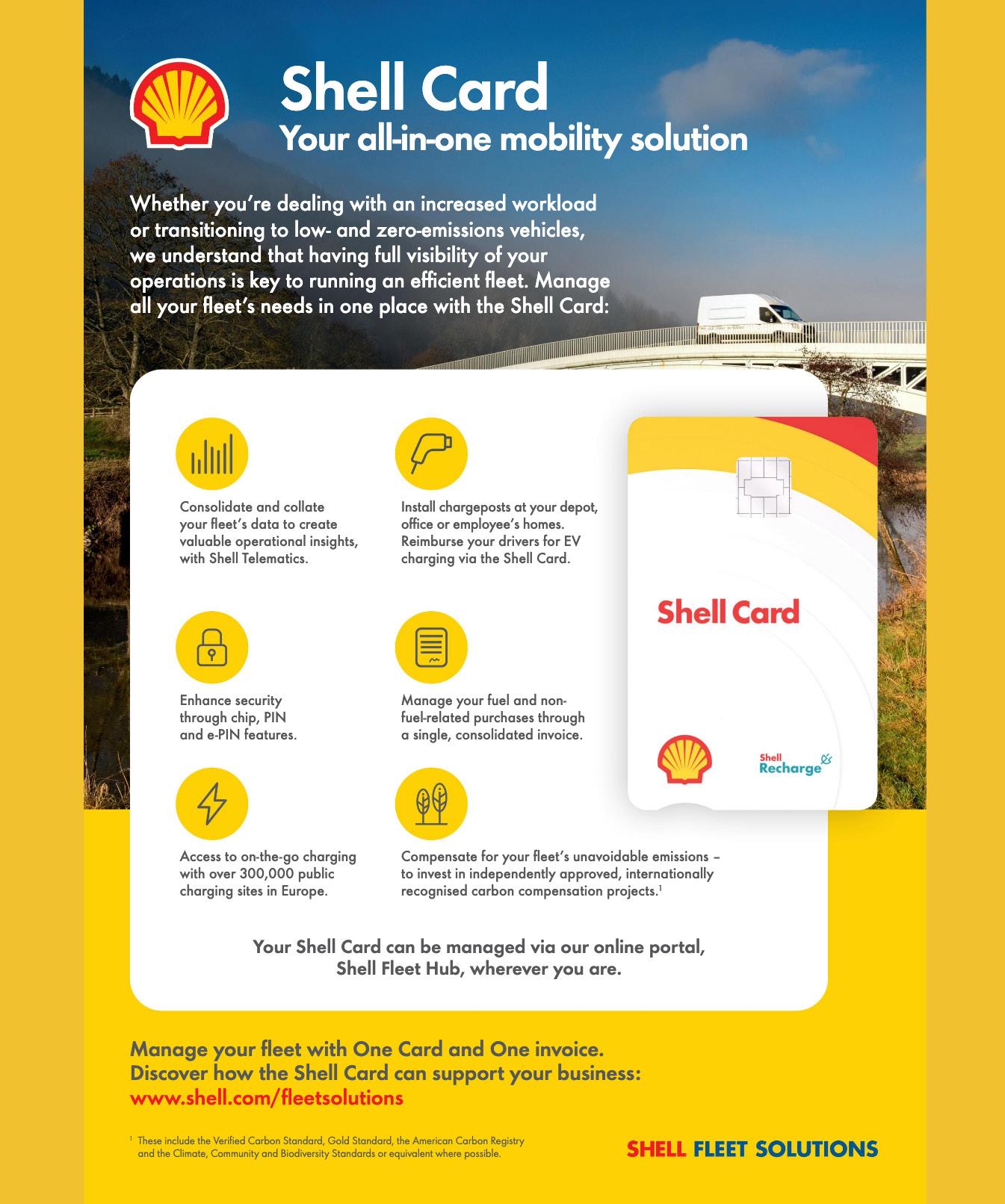
With a growing reliance on automation and digital transformation, businesses must improve asset management and servicing to reduce unplanned downtime pressure.


As industrial automation continues to digitise, one area in particular is becoming a critical area of concern – unplanned downtime. The shift to outcome-based business models, IoT sensors on enabled equipment, and of course, the pervasive and increasing reliance on machines, are all adding to the pressure to avoid outages. Mitigating downtime is a critical, strategic priority in the digital age.
Thankfully, technology has finally caught up to address the problem. IoT enabled connected service is closing this downtime gap – which is important because it’s not only costly, it’s a fundamental step in an organisation’s digital maturity, and a core part of their transformation journey.
The growing reliance on automation is already widening performance gaps. Businesses are losing sight of asset performance, especially in terms of efficiency, leading to a fractured insight of manufacturing or service delivery. The upshot is that unplanned downtime becomes a real problem and even worse, the lack of visibility leads to an unnecessary lengthening of recovery time. Closing this downtime gap is a fundamental step in an organisation’s digital maturity. It’s also becoming increasingly necessary in a post Covid, recovering economy where costs are high, margins are squeezed and customer tolerance for unexpected downtime is low.
According to a Vanson Bourne global study After The Fall: Cost, Causes and Consequences of Unplanned Downtime, 82% companies have experienced at least one unplanned downtime outage over the past five years, and two on average. These outages have lasted four hours. Depending on the company and type of equipment, this can cost organisations anywhere from
$50k-$150k per hour for say, a medical device company, and up to $2m for a major outage on an industrial critical asset. (Aberdeen estimates the cost across all businesses to be $260,000 an hour). The research also revealed high levels of asset estate ignorance across organisations, with seventy percent of companies lacking full awareness of when equipment is due for maintenance, upgrade or replacement.
In addition to financial losses, the research found that almost a third of respondents said they were unable to service or support specific equipment assets, while 65% of respondents from the energy and utilities sector, and 62% from the medical sector cited losing the trust of their customers as a possible impact of suffering a high-profile incident or disaster. Across all sectors, around one in ten admitted their company would never recover from such critical incidents and would ultimately cease to exist.
Nobody wants to be blindsided with those sorts of numbers. But what are companies doing about it? The research hints at a tipping point in recognition of the problem and planned investment to address it. Over time, zero tolerance and zero unplanned downtime will become the norm as companies develop and invest in their industrial digital strategies. Key to this, is an understanding of and investment in field service management and asset performance management capabilities.
According to Vanson Bourne, eight in ten companies have already recognised this, at least that digital tools can improve visibility of assets and help eliminate unplanned downtime. Around 50% of companies confirmed they plan to invest in field service and asset management technologies in the next three years, while 72% of firms claim that zero unplanned downtime is now a number one priority. So the message is sinking in at least.
The challenge for most businesses is to digitally transform without losing oversight of key products, services and of course, valuable equipment assets. Digital transformations do not automatically improve control and visibility. Companies need to pursue a service-led approach to business, to ensure that their ability to manage the actual assets that make products or ensure services run smoothly are always up and running. A clear asset management and predictive maintenance strategy should ensure that businesses take the right path towards reducing, if not completely eliminating downtime.
Understanding problems before they happen and having knowledgeable and digitally empowered service technicians to ensure the smooth running of assets will go a long way to making this happen. A digital twin of physical assets will help considerably here, and the research has revealed that around 54% of companies are planning to invest in a digital twin by 2020.
Throw-in the fact that field service is expected to become a primary revenue driver for most businesses within the next few years and you have a recipe for transformation. Will it be for the better? If zero downtime is important to a business – and it should be –then yes. While the industrial internet is moving us closer to zero downtime, preventative maintenance and AI automation, until a time when machines can actually fix themselves or not break at all, service transformation is becoming table stakes for survival.
In the chronicles of technological history, few events have captured the collective imagination and inspired the rapid acceptance of new technologies quite like the Apollo moon missions. As the world watched in awe as Neil Armstrong took that historic first step onto the lunar surface on July 20, 1969, it marked not only a giant leap for mankind, but also a significant turning point in our relationship with technology.
Fast forward to today, and we find ourselves living in an era where the Internet of Things (IoT) seamlessly integrates into our daily lives, quietly collecting data as we willingly embrace its presence. How did we evolve from moon missions to IoT, and what does this say about our changing perception of technology?


The 1960s was a period of remarkable technological advancements, but none captured the world’s attention like NASA’s Apollo programme. On the day I was born, the crew of Apollo 15 were on the Moon, roaming around on the surface in their impossibly impressive lunar rover. I remember being fascinated by the project all through my junior school years, creating scrapbooks of lunar photos and pictures of rockets. It was a fascination that has persisted into my adulthood.
Even at a young age, I could appreciate that the daring missions to the Moon were not just scientific endeavours; they were triumphs of engineering, innovation, and human spirit. The Apollo programme demonstrated what could be achieved with determination and technological prowess, and it ignited a spark of excitement and curiosity, not just in me, but in the hearts of people across the globe.
The change in our interest in technology was evident. The sight of astronauts floating in the vacuum of space, the intricate spacecraft systems, and the iconic ‘One small step for man, one giant leap for mankind’ statement made technology feel accessible, thrilling, and indispensable. Suddenly, people were more willing to accept the idea that technology could transform their everyday lives for the better.
As the world marvelled at the Apollo missions, technology continued its rapid advancement. Computers shrank in size but expanded in capability, giving rise to the personal computer revolution in the 1970s and 1980s. The advent of the internet in the 1990s connected the world in ways which were previously unimaginable, ushering in an era of digital communication and commerce. Smartphones emerged as ubiquitous devices that blend seamlessly with our lives, putting the power of the internet in the palms of our hands. The proliferation of technology reached a point where people willingly embraced smart
appliances, wearable devices, and smart homes and cars, paving the way for the IoT.
The Internet of Things is the culmination of decades of technological innovation. It encompasses a vast network of interconnected devices, from smart thermostats and refrigerators to fitness trackers and security cameras. These devices collect data, share information, and offer convenience beyond our wildest dreams. However, this convenience comes at a price: the constant collection of data about our habits, preferences, and activities.
I was keen to learn more about what had driven this cultural transformation, and how it might be changing us all. In 2016, I approached a handful of world leading scientists, critical thinkers, and experts, and interviewed each one about their lives, their passion and what they thought of technology and the human race today.
In total, I interviewed about a half dozen of the world’s leading minds. Being a composer, I wrote a piece inspired by each one. It was soon clear that these interviews created a kind of narrative, and these tracks morphed into the first album with my group, 1201_Alarm.
So what did I learn? Surprisingly, the acceptance of IoT devices has been remarkable. People have become accustomed to having their everyday appliances connected and collecting data about their lives. The allure of convenience, and automation have overshadowed concerns about privacy and data security. In essence, we’ve traded some measure of personal privacy for the convenience and efficiency offered by these interconnected devices. Most of us are aware that data is being collected, but we don’t seem to be worried.
But saying that you don’t care about privacy because you have nothing to hide is no different than saying you don’t care about free speech because you have nothing to say, to paraphrase Edward Snowden.
The reasons behind this acceptance are multifaceted.
First, the gradual integration of technology into our lives has made us comfortable with its presence. We’ve come to rely on technology for communication, entertainment, work, and more, and IoT is simply an extension of that reliance.
Secondly, the growing importance of data in modern society has shifted our perception. Data is not just collected; it’s leveraged to provide tailored experiences, optimise energy usage, enhance security, and improve healthcare. As consumers, we have been conditioned to value the benefits of data-driven decision-making, even if it means sacrificing some degree of privacy.
Lastly, trust in technology companies and their commitment to safeguarding our data has played a role in our acceptance of IoT. Stricter regulations and increased transparency have sought to address privacy concerns, but the power of convenience still reigns supreme in the minds of many consumers.
As we look to the future, another technological frontier looms large: artificial intelligence (AI). Much like the Moon missions and the IoT, AI was once the stuff of science fiction. However, as AI applications become more prevalent in healthcare, transportation, finance, and other industries, society is once again faced with the challenge of balancing the benefits of technology with ethical considerations.
The gentrification of technology since the Apollo era, and the rise of IoT, highlights our evolving relationship with innovation. We’ve learned to embrace technology’s potential, even as it transforms our daily lives and the way we view privacy.
So as a life-long tech geek, has this project changed how I feel about technology? Well, I have a classic love hate relationship with it. I’m sat at my desk typing this on my PC, and when I’m done, I’ll send it off via email. Impossibly convenient compared to a typewriter and stamp that I would have used pre-Apollo. But on the same computer, I read of extreme views that are infiltrating moderate minds. Empathy is in decline. Thanks to social media, I have just a handful of typed characters to get my point across quickly before my audience moves to the next thing - there is no time for nuance. My statement is short, maybe not so sweet, and to the point. If you agree, you like, and if you don’t, you delete me. No time to ponder, no time to think. It drives us to the popularist and away from confronting anything that we don’t already agree with. Comfort zones become comfort prisons.
But as renowned social psychologist and tech journalist Dr Aleks Krotoski reminded me, technology isn’t inherently good or bad, it just ‘is’. It’s just like a
hammer. You can use it to build shelter, sculpt the Venus de Milo, or commit a violent crime. It’s not to the hammer’s credit, or it’s fault. But remember, if you are getting something for free on the internet, you’re not the customer, you are the product, so it’s probably worth asking yourself from time to time, just exactly who is holding the hammer?
Steve Thompson is founder and frontman of 1201_Alarm, a musical group creating sounds inspired by science, technology, and endeavour. Their first album, Hello_World has been loaded onboard NASA’s Peregrine Lander, and is set to become the first album on the Moon in late 2023. Their new album, Moonshot is out on all streaming services on 10th November 2023.
The Internet of Things (IoT) has been rapidly expanding, with the number of IoT devices worldwide forecasted to almost triple from 9.7 billion in 2020 to more than 29 billion IoT devices in 2030. These IoT devices have the ability to gather data, communicate with each other, and provide real-time feedback, making them a valuable resource for businesses and consumers alike


Primarily, IoT is built up of two components – hardware (i.e., the devices used) and software (i.e., real-time analytics). The platforms are used in most business verticals and with technology advancing rapidly, IoT has arguably improved the everyday operations of organisations.
The integration of IoT and the cloud creates the opportunity for a unified IT infrastructure for a company. Organisations linking the two different technologies together will reap the benefits of both and create a convenient way of working. However, this should be accomplished without additional complexity and without compromising on performance or security.
The popularity of cloud computing has made connecting to it mainstream with providers like Amazon now offering their own software tools. Increasingly connecting IoT devices to the cloud benefits from greater flexibility, more robust disaster recovery, and automatic software
and security updates if some pitfalls are avoided.
With multiple devices to connect to the cloud, scalability, flexibility, and network connectivity become challenging. setup that works for one cloud and network cannot simply be easily replicated for another setup.
Scalability: The rapid IoT device growth requires cloud platforms to handle large amounts of data from a variety of sources while maintaining performance or reliability. these platforms must be able to scale up or down and expand geographically based on demand, without causing any downtime or interruptions.
Simplicity: IoT devices are often developed by different manufacturers and with different protocols. Simplifying IoT device compatibility to access a cloud platform or consolidating solutions after the merge or acquisition of 2 different organisations may be tricky.
To overcome this challenge, IoT providers must develop universal standards for IoT devices and cloud platforms to ensure compatibility. Industrywide standards would allow for interoperability between devices and cloud platforms, making it easier for organisations to connect and manage their devices.
Network connectivity: IoT devices often rely on wireless networks to connect to the cloud. Common connectivity issues in areas with poor signal strength or network congestion are well-known and hard to address. Other less known issues are the traffic path between the wireless networks and the cloud proper.
For example, if an organisation deploys cloud services in the US and wants to deploy the same service using the same cloud in Asia, the cloud is the same, the hardware is the same, but the access network will be different. Failure to acknowledge this implies service repercussions such as data loss, delayed data transmission, or complete device failure.
To overcome network connectivity challenges, IoT solution must builtin end-to-end connectivity diversity with redundancy and backup systems in mind. Additionally, cloud access must have a robust network infrastructure capable of handling large volumes of data and providing reliable connectivity to IoT devices anywhere these devices may be.
Organisations often encounter significant challenges when it comes to securely connecting their IoT devices to the cloud. Due to weak standard or outdated network setup, they are vulnerable to cyber-attacks. Considering the sensitive data involved, that data is in its transit. Private connectivity solution undoubtedly mitigates these risks. organisations are advised against traversing the public internet between devices and clouds. this reduces the risks of traffic hijacking while increasing the organisation’s visibility, security, and control over its IoT assets.
Likewise, encryption is another way an organisation can protect their data. In the situation that a breach did occur, the hacker would not be able to read the data to which they have gained access. Although seemingly good, too much encryption can act as a double-edged sword. It can overdrain the battery. Furthermore, encryption alone does not prevent the IoT infrastructure to be exposed and exploited by malicious entities as there is nobody supervising the access between the wireless networks and the cloud.
In short, once organisations are on the Internet, even if the data is encrypted some information is visible to hackers, fraudulent activities, and any governmentowned entities.
In an ideal world, organisations want low-latency IoT which means information is accessed and processed in real-time. Latency is a key indicator of data confidence
Wild variation in latency in device-to-cloud transmission will impact the effectiveness of the
benefits of IoT.
To prevent this from happening, organisations need to consider using providers that offer wireless network access, a private network and dedicated access to the cloud. By doing so, organisations gain control of the traffic path improving low-latency performance.
Additionally, it is important to seek partners or technology that deliver global scalability with consistency across different deployments. Having one expert network that can manage the wireless data the cloud access with stable latency creates greater transparency and control compared to multiple providers for each offering.
The emergence of 5G has increased the ability and accessibility to connect to the cloud. 5G is the first cylinder technology that is cloud-friendly, helping the cloud make its way to a mobile cellular environment delivering more data at a faster and more secure rate. Not only
does this make the process easier for organisations to connect, but it also has created the potential to support new models.
Nevertheless, there are still challenges with connectivity. The scalability of cloud performance on a cellular site is not as robust as Amazon or Azure, which hinders mobile networks and telecom environments from achieving the same level of performance as offered by hyperscalers.
Moving forward, organisations need to look into how their data are handled because failure to do so, will affect the potential of their IoT devices.
Moving forward, organisations need to focus more on the way the Internet is transmitted.
Connecting IoT devices to the cloud is a complex and challenging process that requires careful consideration of security, interoperability, network connectivity, data management, and scalability. With the right solutions in place, IoT devices can provide businesses and
consumers with valuable insights, real-time feedback, and enhanced automation. It is important for IoT Solution providers to work together to ensure that IoT devices can be securely and reliably connected to the cloud, to maximize their potential benefits.
According to the Met Office, research published in Nature Communications found that under a high emissions scenario rainfall events in the UK exceeding 20mm/hr could be four times as frequent by 2080 compared to the 1980s. This increase was found to differ depending on the region. So, for example, changes in extreme rainfall in the future could be almost 10 times more frequent in Northwest Scotland, while in the south, it’s closer to three times more frequent.


More and more, communities, especially those in rural areas prone to flooding, will have to find ways of handling these types of events. They need innovative solutions in place to mitigate the effects of such extremes. The Internet of Things (IoT) technology could offer a new avenue for developing more efficient ways for managing flood and stormwater capture and run-off, identifying mechanical malfunctions, and even curbing pollution.
Pilot programs and proof of concept projects often serve as catalysts in promoting smart flood water management by providing a platform to experiment and optimise new technologies and approaches before rolling them out on a much larger scale.
A 2022 Wi-SUN ‘state of the nation’ study on IoT maturity among UK and US IT decision makers shows that the market has gathered momentum during this period. Indeed, the survey reveals that over 90% of respondents recognise that they must invest more in IoT technology over
the next 12 months to remain competitive as the market continues to evolve.
What’s more, half of all respondents with smart utilities strategies have successfully completed projects, an increase of more than 10% from the first IoT study we conducted back in 2017.
However, there is room for growth as the industry continues to evolve. Pilot programs are crucial in fostering innovation and ensuring the successful implementation of smart water management initiatives.
A recent poll conducted by Wi-SUN Alliance earlier this year revealed that of 250 utility companies in the US, threequarters of respondents recognise the importance of pilot projects in driving development and innovation. In addition, 70% agree that government funding/ legislation is important for smart utility development, while 72% called for greater co-operation between public and private sectors to further development.
In the US, the Infrastructure Investment and Jobs Act will provide more than $50 billion to the Environmental Protection Agency (EPA) to advance the country’s drinking, waste and stormwater infrastructure, which will provide opportunities for IoT programs to prove their value.
The potential for smart collection, measurement and efficiency Innovation is critical to solve complex and challenging environmental problems. Advanced meter infrastructure is now the third most likely application for IoT deployments according to our 2022 IoT study, with 80% of respondents planning to roll out such initiatives (up from 68% in 2017). More interesting is that around three-quarters (74%) are planning on rolling out smart water loss/leak prevention initiatives (up from 63% in 2017).
Smart devices can measure water quality and purity, ensuring compliance with water quality standards, and provide data about the environmental impact of flood and storm water. But more, they offer opportunities
for both financial savings and increased efficiency. On average, urban utilities lose 17% of their water before it reaches residents, according to Center for WaterEnergy Efficiency.
In the US, cities like Louisville, Kentucky have already placed IoT sensors in their sewers and other waterways to gather data about water quality, especially after a storm.
The use of IoT devices, such as sensors and real-time monitoring systems, can also support initiatives to provide insights into the status of collection systems, particularly when they are nearing or surpassing their limits. Such advanced tools can also identify areas with excessive runoff and allow for the necessary adjustments to storm and flood water infrastructure to allow for changing volumes of water.
IoT innovation, however, can present challenges, such as security issues, complexity, and the need for proven return on
investment. So, employing the right IoT technology that’s based on open standards is essential for ensuring reliability, resilience and high-grade security.
Some communications technologies like cellular/5G are unable to offer the energy efficiency or cost requirements needed. They can also struggle with the often challenging environments they need to operate in. Standards-based FAN (field area networks) based on wireless mesh technology provides a more robust solution that offers access to a wider choice of IoT device manufacturers, driving cost efficiencies and reducing the risk of vendor lock-in.
A storm or flood water management solution will have to cover a very large area and will require a range of IoT devices, such as advanced metering, pressure sensors, measurement devices and much more. FAN technology can provide this without the interoperability issues.
Integrating FAN networks to create a ‘canopy network’ from which water companies can attach leaf nodes for their edge devices can be viewed as an investment rather than an expenditure. This also creates potential commercial opportunities with energy companies and local authorities.
As critical infrastructure like water facilities is increasingly targeted by cyber attackers and nation states, the importance of investing in IoT devices certified to meet strict authentication and encryption standards is critical. Such devices and networks are safeguarded from spoofing and data interception, reducing the risk of sabotage, ransomware or denial of service attacks. According to last year’s IoT maturity study, security and privacy are among the most common technical challenges among IoT adopters.
As we look ahead to the prospect of more flooding in the UK, policy makers, local authorities and water companies will have to make smart choices about how to manage the impact of these increasingly frequent and costly
events. The opportunities are there for organisations to innovate more using IoT technologies to address these issues.
We find ourselves increasingly reliant on a vast network of interconnected devices. By the close of 2023, experts predict a staggering 15 billion devices will be IoT-enabled, enhancing everything from industrial operations to healthcare systems. This sprawling network includes conventional IoT devices as well as more specialised categories such as the Internet of Medical Things (IoMT). This connected technology is collectively known as the Extended Internet of Things (XIoT).


We find ourselves increasingly reliant on a vast network of interconnected devices. By the close of 2023, experts predict a staggering 15 billion devices will be IoT-enabled, enhancing everything from industrial operations to healthcare systems. This sprawling network includes conventional IoT devices as well as more specialised categories such as the Internet of Medical Things (IoMT). This connected technology is collectively known as the Extended Internet of Things (XIoT).
These networked devices hold immense promise for automating complex tasks, streamlining manufacturing processes, and saving lives in medical settings. Yet, this technological boon comes with a formidable tradeoff - an escalating cybersecurity risk that can’t be ignored. Claroty’s 2022 research highlights an alarming 6% increase in reported vulnerabilities in XIoT devices in only a year’s time.
Therefore, organisations must prioritise securing these interconnected devices as they are becoming an increasingly popular target for cybercriminals. Threat actors have exploited the vulnerabilities of interconnected devices in the past and will continue to do so in the future. So the real question is, how do we protect IoT devices against cyberattacks?
As organisations integrate an evergrowing number of IoT and XIoT devices into their networks, they inadvertently open a variety of entry points that adversaries can exploit. Physicality is one of the biggest challenges when it comes to securing IoT devices, with security teams quickly losing track of their organisation’s IoT assets. Without complete visibility of the XIoT ecosystem, such as how devices are connected and what ports they are using, it is near-on impossible to keep IoT devices updated and quickly address critical vulnerabilities.
Alongside this, control systems used in IoT devices can cause security challenges. Some devices may have intricate user interfaces, increasing the likelihood of misconfigurations and inadequate security measures – creating gaps for cybercriminals to exploit. Others may require physical interaction for software updates or patching, posing significant logistical challenges in industrial facilities, where hundreds of such devices may be deployed, often in remote or hard-to-reach locations.
The stakes are elevated further by the tangible nature of XIoT devices. Unlike purely softwarebased vulnerabilities, security breaches in these physical devices can have immediate, catastrophic consequences. In the healthcare sector, for example, cyberattacks such as ransomware or Denialof-Service (DoS) directly impede the ability to provide critical care. This is a unique case where a cyberattack on an IoMT device could have potentially fatal consequences.
Numerous incidents in recent years have illustrated the severe repercussions of such attacks, including disruptions in patient treatment. For example, two individuals in Spain were arrested after they hacked the country’s Radioactivity Alert Network (RAR). It was later found out that they gained access by launching attacks against the RAR’s sensors.
Clearly, the urgency of securing IoT and XIoT devices is not just a question of data integrity, but also a matter of public safety. However, as mentioned above, patching and updating IoT devices is not always simple.
Addressing the security of an everevolving XIoT ecosystem presents a unique set of hurdles for security professionals. Ensuring secure remote access in an age where digital transformation has blurred network boundaries is a critical challenge.
Conventional perimeter-based security models have increasingly become obsolete as the workforce becomes more distributed due to hybrid working, leading to data flows from diverse locations. From industrial control communications to medical images and confidential patient data, the types of information sent to the cloud have grown in variety and sensitivity.
Amid rising concerns about XIoT security, governments in the UK and EU are taking action by implementing new policies and regulations aimed at efficient vulnerability management. However, government action alone won’t suffice. A proactive approach from businesses and device manufacturers is imperative.
Vendors and developers should embrace robust assessment frameworks to ensure their XIoT devices are secure by design and easy to manage and update. Regular software patches and updates should be an integral part of this framework. Conversely, businesses deploying these XIoT devices should not solely rely on
vendor assurances. Due diligence, including stringent security hygiene practices, must be enforced at the organisational level to secure these connected assets.
Standard IT-focused VPNs fall short of safeguarding this intricate landscape. Hence, organisations now require specialised solutions tailored to protect the wide array of assets that comprise their XIoT infrastructure.
Achieving full visibility of every device connected to the network is pivotal, especially for organisations in critical sectors. This ranges from the smallest of sensors to high-end consumerfacing machines.
By using automated asset discovery tools, security teams can identify connections and make this task more manageable. Furthermore, a well-defined, structured process for regular security updates should be in place to ensure that critical vulnerabilities are remediated
immediately and every asset remains secure.
It’s also crucial to consider containment strategies that prevent a single compromised device from triggering a full-scale security incident. Network segmentation emerges as the most effective tactic in this context. Organisations can limit the extent of damage even if a device is compromised by dividing the network into multiple sub-zones, each with its own access and authentication protocols. This prevents attackers from moving freely across the network laterally and impacting critical IoT devices.
Whilst implementing security technologies is crucial, it is equally important to engage and educate employees around XIoT security. Rather than simply equipping employees with security guidelines, make training more interactive. For example, develop scenario-driven simulations to ensure the organisation is wellversed in effective threat response when a cyberattack does happen. Adversaries have shown that they would not stop at anything in
order to receive a huge payout. As connected devices increase the risk of getting compromised, it is crucial to safeguard the XIoT estate.
The expansion of XIoT devices presents both immense opportunities for secure digital transformation and significant cybersecurity risks that impact the industrial economy and critical infrastructure of all countries. By adopting a multi-faceted approach, organisations can substantially mitigate the risks associated with XIoT devices, bolstering operational efficiency and public safety.
You may have heard the term IoT or Internet of Things thrown about for a few years now, and you’d be surprised to find out that a lot of people still don’t really understand what it means. So if you’re one of them don’t worry! An IoT can be a really useful part of any business not just an officebased business and the chances are that you already have an IoT implemented in your workspace without even knowing it.


An Internet of Things (IoT) refers to the connection of most things in an office to the internet, allowing them to communicate with each other and usually a central system where it can all be controlled. These objects can range from appliances like thermostats and refrigerators to industrial machinery and vehicles.
In essence, IoT will turn normal devices and objects into smart objects. They’ll be capable of communicating and responding to other devices, usually without any interaction needed from a human.
A good example of this would be an office HVAC unit being able to turn itself on at a certain time of the day, being controlled from your phone or even adjusting the temperature of the space depending on the weather forecast.
There are so many ways that an IoT can impact your business and make it easier to work on a day-to-day basis. Streamlining
your business in this way can help to make you more profitable and productive.
The integration of the Internet of Things (IoT) into office environments has the potential to increase productivity. IoT sensors and devices can help to streamline day-to-day office operations by automating routine tasks. Smart lighting and climate control systems can adjust settings based on occupancy, creating a comfortable and energy-efficient workspace.
IoT can create a way to collect data for office insights and patterns in usage. Sensors can monitor things like occupancy, temperature, lighting, and equipment usage in real time. The data collected can be analysed, and show insights into how the office is being utilised. For example, it could show which areas of the office are most frequently used, the times of day when spaces are in high demand, and trends in
resource consumption. This can then be used to make data-driven decisions regarding office layout, resource allocation, and energy efficiency, ultimately optimising the workspace for productivity, cost savings, and employee satisfaction.
We’ve asked a number of business owners about how they’ve implemented an IoT so that their businesses can become more efficient and run productively. With a variety of industries, there are often different devices and implementations to look out for and these business owners work with an IoT in different ways.
“We’ve been in business since 2009, we do everything we can to stay ahead of the curve. That means keeping our office up to date with the latest tech so that we don’t fall behind. We like to test out new things so that we have first-hand experience with anything that we recommend to our clients.
Something that we’ve been looking into recently is the introduction of smart locks. Some smart locks are able to detect when the right person is opening the door so that they’re able to enter. If they don’t detect the right person then the lock doesn’t react and the door stays locked. These locks can use wearables or even your phone to make sure you’re someone with the correct level of access.”
Richard Yeo, Advanced Commercial Interiors“We’re an air conditioning contractor, HVAC units are a great integration for any IoT. Being able to program these units to react to the weather forecast means that you’re able to have a hands-off approach to the heating in your office.
With the integration of HVAC and IoT technology, you’re able to remotely monitor your HVAC system with the aim of being able to diagnose potential problems with your system. For example, some integrated sensors are able to detect leaks, drops in pressure, increased vibration
or even efficiency in controlling temperature. Having access to all of this information quickly and in real-time you’re able to reduce the system downtime and quickly rectify the problems.”
Lee Jackson, Lee Jackson Air Conditioning“The Internet of Things is a huge part of manufacturing in today’s world. One of the best editions is wearable tech. Things like heart rate, blood pressure and so much more, which means that while one of your technicians is working, you’re able to make sure that they are safe, which is especially useful in working environments that have high risk factors. Similarly, smart sensors are able to detect things like the level of application in a given area, noise levels and even radiation if it’s applicable.
Having this means that manufacturers, factories and warehouses are all able to work more effectively and ensure the safety of their employees.”
Simon Cullingworth, MetreelCreating an IoT setup has never been easier. There are so many guides out there online to choose from that you should be able to piece together a pretty good idea of how to get one set up on a technical level. Here’s more of an overview of how to get started.
The first thing that you need to do is to understand what it is you’re trying to achieve. What are you trying to track, what you’re trying to streamline and in the end how would you like all of this to impact your business?
Once you have a clear understanding of what you’re trying to do, you can start to make other informed decisions on how to move forward.
Choosing the right kind of hardware and devices that you’re going to be using is the next part of the process. Knowing what
you’re trying to track helps you to make the right decisions on which devices you use. You‘ll be able to choose from sensor types, connectivity options and even the type of power source that you need to use.
Once you know what it is that you’re tracking and which devices you need to invest in you can start to look at the way in which you’re going to track this data and let your devices communicate with each other.
Once you know how you’re going to track everything and review this data you can start to build out your dashboards and visualisations.
After you have all of the logistics figured out and you know how you’re going to start tracking, how your devices are going to talk to each other and how you’re going to use the data once you have it, you can begin.
Installing the infrastructure and devices is the next step. Once this has been done you can sit back and collect that data until you have enough to start making decisions with it.
If you’re not able to do all of this yourself, you’re not alone. There are a number of companies out there that specialise in helping other businesses design and set up an IoT. many of these IT companies will be able to sit down with you, understand what it is you’re trying to achieve and guide you in the right direction.
They’ll have the expertise to set up your new IoT and implement all of the integrations necessary.
Physical operations — those industries that do the heavy lifting in areas such as transport, logistics and construction — are the building blocks of the global economy.


Lorries, vans, and trucks ensure that almost every item we consume is shuttled between factories, processing plants, warehouses, distribution centres, shops — and even brought to our front door.
People think these vehicles are powered by petrol, diesel or, increasingly, electricity. But they’d be wrong. Today’s modern fleets are fuelled by data.
In recent years, the world of physical operations has undergone such a digital transformation it is now one of the largest and most complex Internet of Things (IoT) enterprises on the planet.
Today, these vehicles are bristling with technology that constantly collects data such as location, vehicle performance, tyre pressures — and even the temperature of refrigerated units — that enables managers to constantly monitor performance.
Paired with mobile connectivity, not only is this vehicle data being collected, but it can also be streamed via the cloud to a central connected platform giving managers complete oversight of their fleet at any time of the day or night.
It means managers can track the location of lorries and vans in real time, update customers about delivery or pick-up times, and assess the performance and fuel efficiency of vehicles.
Dual-facing AI-enabled cameras — designed to help improve driver and road safety — add another layer of IoT sophistication.
The result is a constantly updated system of record — a single pane of glass where all the data is collated to create an overview of total operational performance.
Of course, all this is only possible because connected IoT technology is now affordable and ubiquitous.
After all, vehicle telematics and dashcams have been around for years. The problem with these early systems is that once the data is gathered — be that engine diagnostics or a video of a road accident — someone would have to manually download the information. Even then, the data tended to be siloed supporting a single function such as engine diagnostics.
Connected platforms provide realworld insights
Not only do today’s modern enterprise systems stream information automatically, but the data can be linked with different systems and applications — from maintenance scheduling to payroll. And it’s a game-changer.
But it’s not just the technology that takes centre stage. Instead, it’s the meaningful insights derived from the data that help make fleets safer, more productive and more sustainable that are the real show-stoppers.
For instance, in the last year alone Samsara’s technology platform helped reduce unnecessary engine idling — by using data to identify problem areas before taking measures to correct it — across its customers’ fleets by 130 million hours, saving millions of dollars and helping reduce carbon.
Similarly, connected AI dashcams — linked to personalised driver coaching — have helped prevent 120,000 accidents protecting frontline workers and other road users. While phasing out manual and paper-based processes has led to the creation of 110 million digitised workflows, saving employees countless hours that are better spent on training, upskilling, and other tasks.
But this is just the beginning. Once regarded as being in the technology slow lane, businesses working in physical operations have set their sights on more ambitious things.
“Our customers are using data and AI on our platform to make the jobs of their frontline workers easier, safer, and more efficient,” said Sanjit Biswas, co-founder and CEO of Samsara, speaking recently at our Beyond Conference in Austin, Texas.
He talked about how automation, digital transformation, and AI are reshaping the world of logistics. And how the momentum for change is unstoppable.
It’s a point echoed by our 2023 State of Connected Operations report, which explores just how fast the world of transport and logistics is changing.
It found, for example, that 84% of firms intend to use generative AI by 2024. And it predicts that the sector is undergoing such rapid change that by 2025, one in six employees is predicted to be doing jobs that don’t exist today.
As the report makes clear: “Today, we are at the beginning of a massive transformation. There’s no denying that monumental technological shifts are underway,
from autonomous vehicles to alternative energies, robotics, and more by 2025.”
The report went further revealing that 50% of those firms surveyed had reported increased safety and improved compliance as a result of digital investments leading to higher employee productivity (64%), higher revenue (59%), and increased net profit (56%).
This is how data is driving the digital transformation in the world of physical operations. Not petrol. Or diesel. But data. What’s more, the speed of change is accelerating.
The integration of Internet of Things (IoT) technology in schools has provided numerous benefits and challenges for the education sector. From the acquisition of new technology equipment to the adaptation of curricula and teaching techniques, IoT has the potential to revolutionize the way students learn and educators teach.


The integration of Internet of Things (IoT) technology in schools has emerged as a transformative force in the education sector, offering a plethora of benefits alongside notable challenges. The impact of IoT in Bangladesh’s education, corporate, and service sectors has been substantial, particularly in enhancing efficiency and optimizing operational performance. This technology has empowered educational institutions, ranging from schools to universities, to streamline their processes, leading to improved financial performance and resource management.
One of the significant advantages of implementing IoT in educational settings is the potential enhancement of safety and security. Educational institutions can harness IoT tools to monitor and control access to buildings, thereby ensuring the well-being of students and staff. This not only instills a sense of security within the school environment but also contributes to an increase in overall productivity.
However, the journey towards incorporating IoT in schools is fraught with challenges. Educational technology, including IoT, faces hurdles in both implementation and usage. To gain a comprehensive understanding of these challenges and explore potential solutions, it is imperative to seek insights from experts in the field of education technology.
Experts in education technology have emphasized several challenges associated with the integration of IoT in schools. Chief among them is the formidable initial cost of acquiring IoT devices and establishing the necessary infrastructure. Schools, often constrained by limited budgets, find it challenging to embrace IoT technologies fully. Moreover, there is a need for substantial investment in staff training to ensure educators are adept at utilizing IoT tools effectively.
Another considerable challenge lies in the integration of IoT devices and services into existing educational systems and infrastructure. Prudent planning is
imperative to prevent disruptions and guarantee the seamless operation of these technologies. The compatibility issues that may arise between diverse IoT devices also pose a challenge, necessitating schools to identify interoperable solutions.
Privacy and security concerns loom large over the implementation of IoT in schools. Safeguarding student and staff data is paramount, and it is imperative to ensure that IoT devices are impervious to cyber threats. Regular monitoring and updating of security protocols are essential to mitigate risks and protect sensitive information.
Furthermore, the integration of IoT in schools demands meticulous consideration of ethical and legal aspects. Adhering to data privacy regulations and obtaining explicit consent for data collection and usage are non-negotiable. Transparent communication with students, parents, and staff regarding the purpose and benefits of IoT implementation is crucial for building trust and allaying concerns.
Despite these challenges, the potential benefits of IoT in education render it a pursuit well worth undertaking. Schools that successfully integrate IoT technologies stand to create more engaging and personalized learning experiences for students. Real-time data collection and analysis facilitated by IoT can help identify students’ strengths and weaknesses, enabling targeted interventions and adaptive learning approaches.
Moreover, the integration of IoT in schools is a dynamic process that requires ongoing commitment and adaptability. The rapidly evolving nature of technology necessitates schools to stay abreast of the latest advancements and continuously update their systems. This demands a culture of innovation within educational institutions, fostering an environment where teachers and administrators are encouraged to explore new possibilities and integrate emerging technologies seamlessly into the learning experience.
A critical aspect that deserves attention is the role of teachers in this IoT-driven educational landscape. As schools adopt IoT, educators must undergo comprehensive training programs to not only familiarize themselves with the technology but also to develop strategies for its effective integration into their teaching methodologies. The shift towards a more technologically driven education system requires educators to become facilitators of learning, guiding students in navigating the digital realm and making the most of the available resources.
Furthermore, the benefits of IoT in education extend beyond the confines of the traditional classroom. Remote learning, which became a necessity in various parts of the world, especially during the global pandemic, can be significantly enriched through IoT. Smart devices and sensors can facilitate seamless communication and interaction between students and teachers, irrespective of geographical distances. This opens up new possibilities for collaborative learning and ensures
that educational opportunities are not limited by physical boundaries.
In the realm of special education, IoT holds particular promise. Customized learning experiences can be tailored to the unique needs of students with diverse abilities. Smart devices can assist in monitoring and supporting students with learning disabilities, providing real-time feedback and adapting learning materials to suit individual learning styles. This inclusivity is a testament to the transformative potential of IoT in creating a more equitable educational landscape.
As schools navigate the challenges and opportunities presented by IoT, collaboration emerges as a key factor. Collaboration not only within the educational community but also with technology experts, policymakers, and industry stakeholders is crucial. Partnerships can help schools access resources, share best practices, and collectively address challenges. Moreover, collaborative efforts can contribute to the development of standardized protocols and guidelines, ensuring
a more cohesive and secure implementation of IoT across educational institutions.
The evolution of IoT in education is closely tied to the broader societal digital transformation. Students, as digital natives, are growing up in a world where connectivity and technology are integral parts of daily life. Integrating IoT into education aligns with the needs and expectations of this tech-savvy generation, preparing them for a future where digital literacy and adaptability are essential skills.
In conclusion, the integration of Internet of Things technology in schools represents a paradigm shift in education. While challenges such as initial costs, security concerns, and infrastructure integration persist, the potential benefits for students and educators are immense. Successfully navigating these challenges requires a strategic and collaborative approach, with a commitment to ongoing training and adaptability. As we move forward, it is essential to view IoT not merely as a technological addition but as a catalyst for a
more connected, personalized, and inclusive education system that prepares students for the complexities of the digital age.
Nikola Tesla, the inventor of alternating current, had a vision of a future where electricity could be transmitted without the need for physical wires. He was so far ahead of his time that he was discredited for the notion and, unfortunately, did not live to see that his vision has now become a reality with the wireless charging of phones. The technology continues to be an exciting one, with the possibility of charging electric vehicles (EVs) in this way on the horizon.


However, there are some obstacles that need to be overcome before this technology can be widely implemented. Nevertheless, it has the potential to greatly improve the convenience and efficiency of EVs, as drivers would no longer need to physically plug in their vehicles for charging. Instead, the vehicles could charge wirelessly while parked.
For this to happen, manufacturers would need to align, and their respective technologies would need to be standardised. Additionally, the speed of wireless EV charging is currently slower than wired charging, and in our fast-paced modern world where time is valued, this could pose a challenge. Therefore, it is important to explore the advancements, potential and challenges in this evolving technology.
A number of car manufacturers are ahead of the game with respect to wireless charging, namely Sweden’s Volvo and South Korea’s Genesis. Volvo has been
testing a wireless charging system for its XC40 vehicles as part of a three-year test which has resulted in a system that can charge at up to 40kW. Meanwhile, Genesis’ system can charge at a more modest 11kW, which means that it would take a Nissan Leaf with a 40kWh battery about four hours to fully charge (which would give the driver approximately 270km in range), while Volvo’s offering would be fully charged in an hour.
It is worth noting that this is faster than the 3.6kW charge that is possible from a standard wall socket, but still pales in comparison to the speed of 100kW and 350kW charging times offered by increasingly common wired charging points.
As I mentioned earlier, wireless EV charging works with the same technology as wireless phone charging That is to say, magnetic resonance is used to transfer energy from a charging pad to a receiver built into the vehicle. This is important to note because some industry experts believe that the
bottleneck in charging technology lies not with the charging pad itself, but with the vehicle’s battery management system. Upgrading this system would enable much faster charging speeds, which is crucial not only to compete with wired chargers but also to take full advantage of the benefits of wireless charging.
In comparison to wired charging, where drivers have to physically plug in chargers and initiate the process through a terminal, wireless charging would allow for charging whenever the vehicle is parked. This is especially beneficial for quick charging sessions, which are more efficient with faster chargers.
Moreover, the operation of wireless chargers is expected to be wireless as well. This means that instead of needing a terminal like with wired chargers, the technology could directly communicate with the vehicle using wireless technology for payment purposes. Since wireless charging is primarily expected to be used in short bursts rather than long periods, this wireless
payment interface would be highly practical.
The current infrastructure for wired charging is getting more advanced, with more than 45,000 public charging points in the UK and growing rapidly, with more charge points at private businesses and residences. Clearly, it is not feasible to tear out all of the existing chargers and replace with a new technology that can only be used on a smaller number of vehicles. Just as it may not be possible to upgrade many of the 810,000 EVs on the UK’s roads to use wireless charging, so new vehicles will need to come onto the market that have wireless charging technology.
Although the sector has made strides, we’re still getting the current infrastructure to a stage where EVs can truly compete with the traditional ease of refuelling an ICE vehicle at a petrol pump.
The future’s exciting but even though I’d argue there are clear advantages that wireless charging may offer, it shouldn’t take away from the here and now. This is because many UK businesses are right in the middle of or just starting to transition their fleets to the allelectric future.
I’m speaking to many companies, daily, that understand the benefits of EVs and how there is no time like the present to transition now – especially as technology and infrastructure are already rapidly improving in the run-up to the 2030 cut-off for the sale of new petrol and diesel vehicles, and beyond.
Therefore, it is important that all stakeholders stay on top of developments so they can react quickly to changing scenarios in mobility and make informed decisions during the transition.
Allstar is the UK’s market leading fuel, EV and expense card providers for businesses, with over 40 year’s expertise.
Accepted at over 90% of fuel sites across the UK, it has over 1.2 million cards in circulation across 50,000 businesses, giving drivers’ access to fuel spend across all supermarkets, major oil companies and motorway fuel sites. The network encompasses around 7,700 sites nationwide, alongside more than 4,000 charging locations and over 12,000 charge points across its growing electric vehicle charging network.
FLEETCOR Technologies, Inc. is a leading global provider of commercial payment solutions. The company helps businesses of all sizes better control, simplify and secure payment of their fuel, toll, lodging and general payables. With its proprietary payment networks, FLEETCOR Technologies, Inc. provides affiliated merchants with incremental sales and loyalty.
FLEETCOR Technologies, Inc. serves businesses, partners and merchants in North America, Latin America, Europe and Australasia.
With so many issues coming up about cloud storage, what is the solution to the dominance of the major giants like AWS (32%), Microsoft (23%) and Google (10%) taking 65% of the world cloud market?

A recent article by Technology reporter Sean Mcmanus for the BBC covered the attempt by Mattias Åström, CEO of Evroc, to create a European Hyperscale cloud. His approach that European countries build critical infrastructures, as part of the Gaia-X Project, which aims to create a federated sovereign cloud from 377 member organisations. Åström has secured €15m in seed funding with plans to build eight data centres in Europe in the next five years, with the first being a large pilot data centre in Sweden. A requirement for a UK or European Sovereign cloud to take on the American based hyperscalers is something we have been highlighting for a while at Claritas Solutions. European and UK companies are handing their data to the US giants without thinking how the impact of the European GDPR and the US Patriot Act means to their business long term.
So, would a European solution work? A united sovereign cloud comprising of a consortium of different companies would have its merit and would have the EU principle behind it of linking all its members. Let’s face it, there is not the venture capital or investment to create a Silicon Valley outside of the US, there simply isn’t a European equivalent on that scale.
In an attempt to resolve the dilemma between innovation and compliance, a European sovereign cloud does give us the opportunity to quickly take advantage of the public cloud and implement digitalisation projects with inbuilt data sovereignty. However, Jeremy Hunt’s solution to generating funding for such tech innovation is by the merging of workplace pension schemes to release up to £75bn of retirement funds to invest in IT start ups, is quite frankly, ridiculous. It’s a stab in the dark, expecting a unicorn to turn up not only to recover but then increase the investment funds, while as we already know a very high percentage of these start-up businesses will simply fail, with possible devastating impacts to
people’s pensions. No one over the age of 40 would benefit from such a scheme, with investors looking at a minimum 10yr period to see anything come out of it, if at all. If you want to invest in Britain’s economy, but you have no idea how to go about it, you are not alone. Business leaders don’t know either, with government officials unable to devise ways to promote investments that they can persuade ministers come at minimal cost and will win votes.
Here’s a radical thought, what about introducing a R&D tax scheme on the big financial institutions (the past instigators of global crashes, which the government used our tax contributions to bail out), controlled and run by an independent external body to invest in start-ups rather than putting the burden on the UK citizen once again?
There is an urgency behind demands for the UK to begin repairing what it has and building new things that allows us all –and not just a wealthy few – to participate in the best the 21st
century has to offer, from better healthcare to climate-friendly transport.
Whilst Brexit exiled us from the EU, we are still in reality European, and we need to be part of this scheme to make it work for all European citizen data that the UK processes and holds. We are all still smarting and finding our feet post Brexit, but we need a different mindset to tackle this challenge. Imagine a successful cyber attack on one of the US cloud giants, taking down a region or worse the entire system. If Europe goes ahead with what is being proposed and uses many different companies to create a federated Sovereign cloud service, one attack would not have the same impact due to the distributed infrastructure.
Therefore, it is a safer and more realistic idea and one the UK needs to back. We are still ‘European’ and the flow needs to be maintained. It happens in many different areas of industry, so why not for a shared cloud? Take Airbus, all wings on commercial aircraft are designed and built in
the UK, with the assembly taking place in plants located in France, Germany and Spain. European and UK collaboration is the only way forward.
The UK has always been a country of inventors, but has always lacked a venture capital finance structure like the ones seen in the US. Americas government policies like the Chips and Science Act, the Inflation Reduction Act (IRA) and the reactive European Chips act will have global repercussions. Take the IRA which aims to spur investment in green technology via a multitude of grants, loans and tax credits to public and private entities. Controversially, the tax credits are given out to green industries on the condition that production and final assembly is based in the US. It’s a form of protectionism via state aid. EU leaders are also considering adopting something similar, putting even more pressure on Britain.
We all need to get over Brexit, and look at what is the best solution for everyone. If one country doesn’t have the funding
or capacity to create a cloud to compete directly with the US –then the UK needs to consider becoming part of this. The risks of not doing it? Being left behind and seeing our data sovereignty moved to the US by stealth and further isolation from Europe as it builds its own Federated Sovereign cloud.

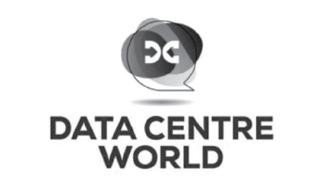
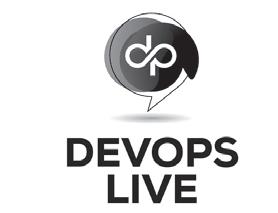

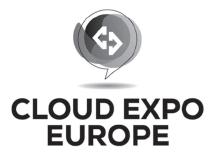




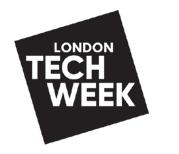
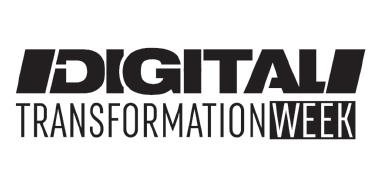
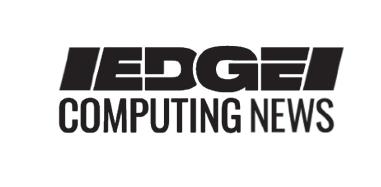


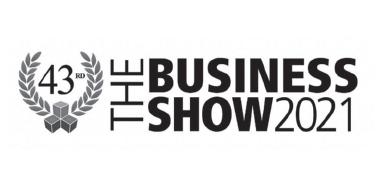




FOLLOW US ON
STORIES INSPIRED BY MODERN LIVING.